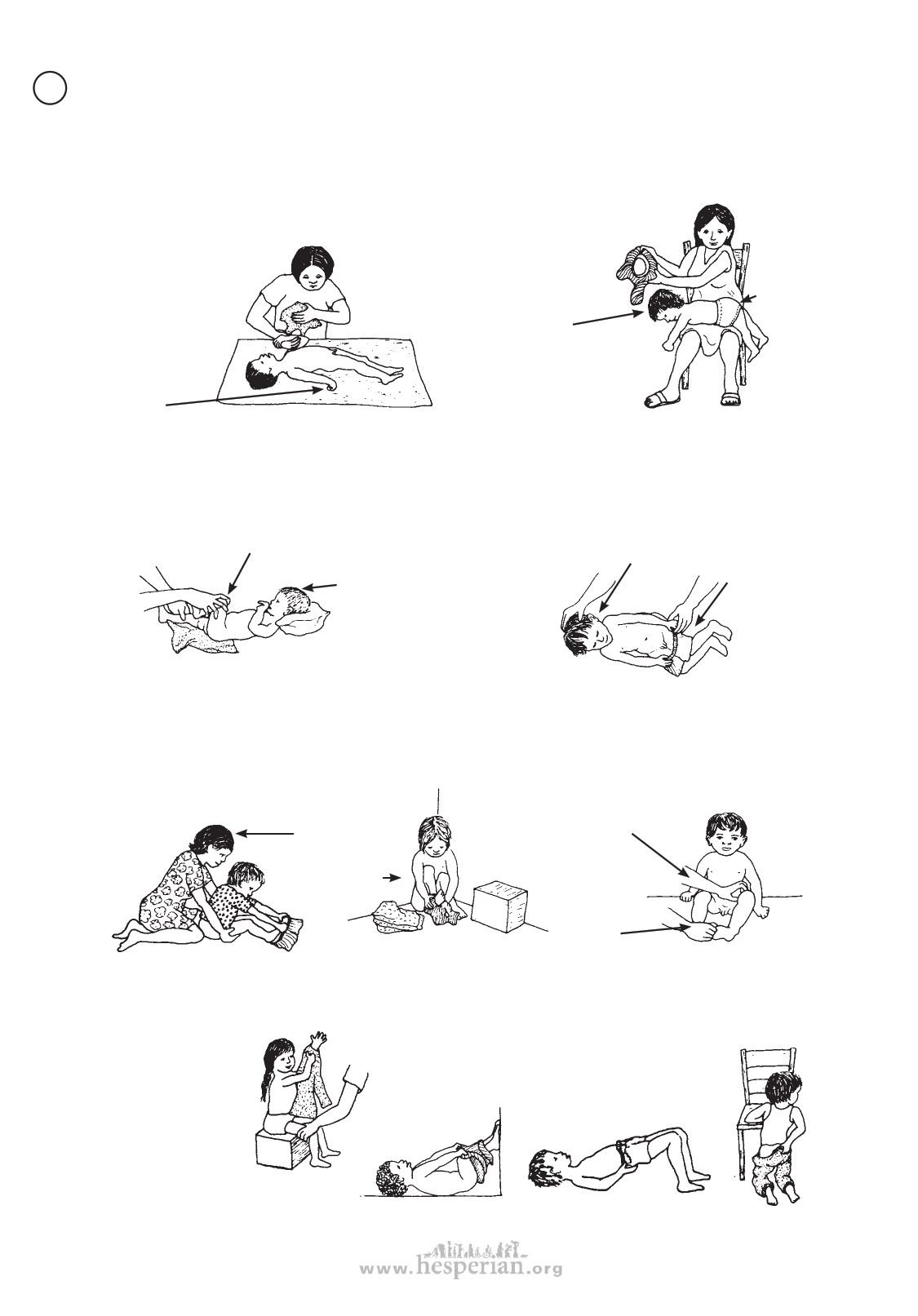
334 chapter 37
cp POSITIONS FOR DRESSING
Try dressing the child in different positions, to see what works best.
Body position is especially important
when dressing a child with spastic cerebral
palsy. Often his body tends to bend stiffly
backward if he is dressed lying on his back.
It often works better to dress a
child with spasticity with his body
and hips bent
forward.
A bad position:
(child’s body
stiffens
backward)
A good position:
face-down
over lap
hips
bent
Hand bends
tightly.
For changing that needs to be done
face-up, try putting a firm pillow
under the head, and keep knees and
hips bent. This may help the baby
relax and
not stiffen
knees bent
up.
head
up
Lying on the side is often a good position
for a child with spasticity who is beginning
to dress himself. He may need to roll from
one side to the other to pull on clothes—
but he should
keep his
knees, hips,
and head
bent to avoid
head
forward
knees and
hips bent
stiffening.
To help the child
dress while sitting,
be sure he is in a
steady position.
You can help him
keep his hips bent
and body
forward
like
this.
If balance when sitting
is still not good, or if the
child tends to stiffen
backward, try sitting in a
corner to dress
first
with help
then alone
Sitting with the feet
forward and knees apart is
a good position for play and
dressing. If legs press
together stiffly, try
pushing
the knee
out gently
while you
press
under the
big toe.
When a child with athetoid
cerebral palsy tries to raise her
arms or to speak, her
feet may come
off the ground
or her legs spread.
Try pressing down
over the knees,
keeping them
together. Or press
on top of the feet.
Help the child find the
position that allows the
best control for dressing.
Disabled village Children